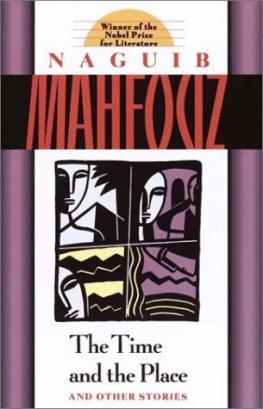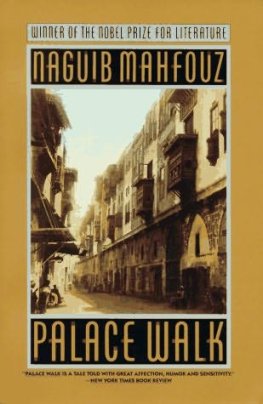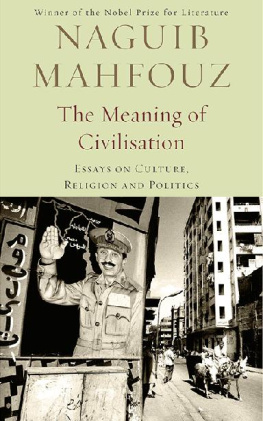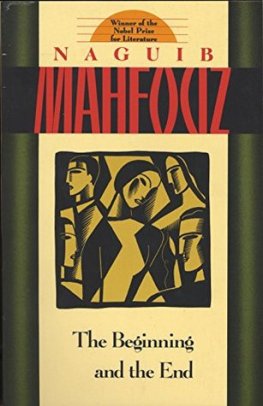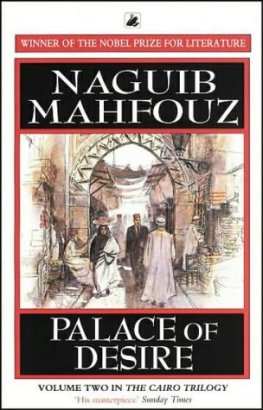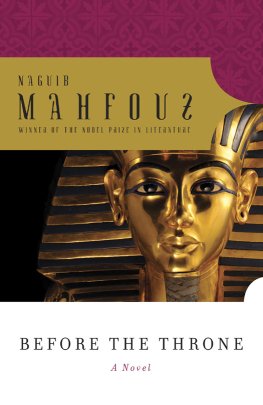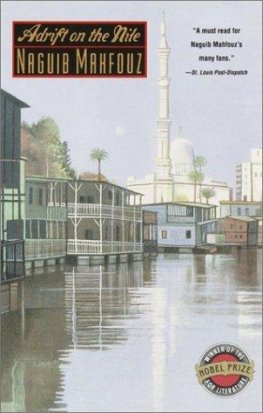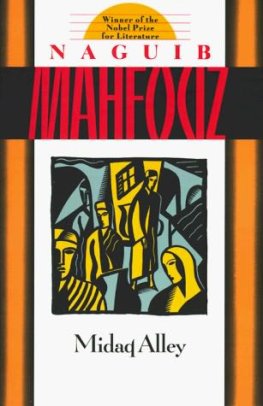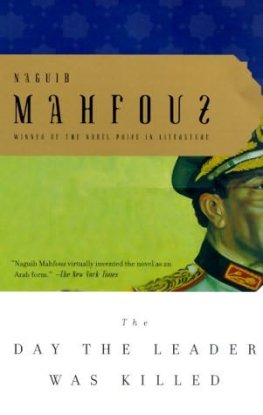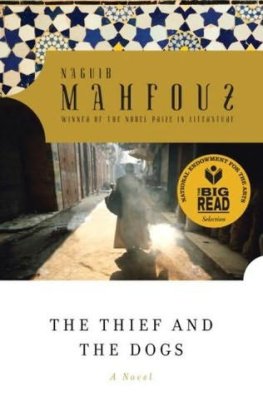Naguib Mahfouz - Voices from the Other World
Here you can read online Naguib Mahfouz - Voices from the Other World full text of the book (entire story) in english for free. Download pdf and epub, get meaning, cover and reviews about this ebook. year: 0, genre: Art. Description of the work, (preface) as well as reviews are available. Best literature library LitArk.com created for fans of good reading and offers a wide selection of genres:
Romance novel
Science fiction
Adventure
Detective
Science
History
Home and family
Prose
Art
Politics
Computer
Non-fiction
Religion
Business
Children
Humor
Choose a favorite category and find really read worthwhile books. Enjoy immersion in the world of imagination, feel the emotions of the characters or learn something new for yourself, make an fascinating discovery.
- Book:Voices from the Other World
- Author:
- Genre:
- Year:0
- Rating:4 / 5
- Favourites:Add to favourites
- Your mark:
- 80
- 1
- 2
- 3
- 4
- 5
Voices from the Other World: summary, description and annotation
We offer to read an annotation, description, summary or preface (depends on what the author of the book "Voices from the Other World" wrote himself). If you haven't found the necessary information about the book — write in the comments, we will try to find it.
Voices from the Other World — read online for free the complete book (whole text) full work
Below is the text of the book, divided by pages. System saving the place of the last page read, allows you to conveniently read the book "Voices from the Other World" online for free, without having to search again every time where you left off. Put a bookmark, and you can go to the page where you finished reading at any time.
Font size:
Interval:
Bookmark:
THE FOLLOWING TITLES BY NAGUIB MAHFOUZ ARE ALSO PUBLISHED BY ANCHOR BOOKS:
The Beggar*
The Thief and the Dogs*
Autumn Quail*
The Beginning and the End
Wedding Song
Respected Sir
The Time and the Place and Other Stories
The Search
Midaq Alley
The Journey of Ibn Fattouma
Miramar
Adrift on the Nile
The Harafish
Arabian Nights and Days
Children of the Alley
Echoes of an Autobiography
The Day the Leader Was Killed
Akhenaten, Dweller in Truth
The Cairo Trilogy:
Palace Walk
Palace of Desire
Sugar Street
*published as omnibus editions
NAGUIB MAHFOUZ
Voices from the Other World
Naguib Mahfouz is the most prominent author of Arabic fiction today. He was born in 1911 in Cairo and began writing at the age of seventeen. His first novel was published in 1939. Since then he has written nearly forty novel-length works and hundreds of short stories. In 1988 Mr. Mahfouz was awarded the Nobel Prize in Literature. He lives in the Cairo suburb of Agouza with his wife and two daughters.
Raymond Stock (translator), a doctoral student in Arabic literature at the University of Pennsylvania, is writing a biography of Naguib Mahfouz. He is the translator of Naguib Mahfouzs novel Khufus Wisdom.
Glossary
al-Arnauti: In Arabic, the Albanianan allusion to the origins of the then-regnant Muhammad Ali dynasty, installed nominally under the Ottomans as rulers of Egypt in 1805. Much of the Egyptian aristocracy was subsequently of mixed TurkishAlbanian blood. The pasha in The Mummy Awakens is most likely based upon Mohamed Mahmoud Bey Khalil (18771953), a millionaire Francophile collector of art who was attacked in the Egyptian press in the late 1930s for saying he wanted to will his large private gallery of mainly French paintings to the Louvre. It is now housed in his former mansion in Giza in a museum bearing his name.
Aswan: A city at the Niles first cataract in Upper (southern) Egypt. Mahfouz here uses the pharaonic Egyptian name Abu (actually Elephantine Island at Aswan), which was the countrys southernmost outpost on the border with ancient Nubia. The historical Userkafs capital was at Mennufer (Memphis) close to present-day Cairo, rather than Aswan, though the royal annals of the Old Kingdom recorded on the Palermo Stone show that he kept a per (house, estate) at Abu. His only known pyramid quarried into rubble in antiquitywas built near there, in northern Saqqara, rather than at Aswan.
Broad beans: Also called horse beans (and known as ful in Arabic), these are an indispensable part of the Egyptian diet.
Fuad I University: Named for King Ahmad Fuad I (r. 191736), who, as a prince, was one of its founders in 1908. The institution was renamed Cairo University after the Free Officers coup of 1952. Naguib Mahfouz earned a bachelors degree in philosophy there in 1934 (when it was then called the Egyptian University), where he briefly did postgraduate work and served in the schools administration until 1939. During this time, he occasionally attended lectures in Egyptology, some of which were likely given by Prof. Etienne Marie-Felix Drioton (18891961), then head of Egypts Department of Antiquitiesand a probable model for Prof. Dorian in the story, The Mummy Awakens.
Idal-adha: The Feast of Sacrifice, which commemorates Abrahams sacrifice of a ram in place of his son Ismail, as related in the Quran. Muslims celebrate this several-day event (also known as Greater Bairam) by slaughtering animals on the first dawn of the feast, often distributing the meat to the poor.
Ka: In the complex system of pharaonic-era beliefs, when someone died, their ka, or spiritual essence, would come to visit the deceased. The ka brought with it the ba, the dead persons soul, depicted as a human-headed bird in mortuary reliefs, often sculpted sitting on the mummy. Strictly speaking, it was Hors ba, not his ka, that was represented by the sparrow. Yet the ka was generally seen in the ancient religion as the agent for revenge against tomb intruderswhich certainly fits The Mummy Awakens.
Kameni: A Fourth Dynasty high priest of the early vulture goddess Nekhbet in her temple at al-Kab on the Nile opposite Hierakonpolis in Upper Egypt, ca. 2560 BC.
Khnum: Depicted as a man with the head of a ram, Khnum was the creator-god of Elephantine (ancient Abu at Aswan).
Punt: Hailed as Gods land by the ancient Egyptians, Punt was probably located on the Red Sea in eastern Sudan or Ethiopia, or perhaps in northern Somalia. Egyptians apparently began traveling there during the late Fourth Dynasty (ca. 26492513 BC).
Qadesh: A city on the Orontes River in present-day Syria that served as a base for the Hittites against their rivals, the Egyptians, especially during the New Kingdom.
Qaqimna: The Arabic name for Kagemni, a famous Sixth Dynasty vizier. The Teaching for Kagemni, a Middle Kingdom text concerned mainly with the rules of gracious conduct, was putatively addressed to Kagemni. The Teaching itself, however, puts Kagemni in the Fourth Dynasty.
Saidi: An Upper Egyptian; the word for the southern part of the countryfrom which the Nile flows down to the North and the seais al-Said, the elevated land. Saidis are commonly seen as physically resembling the ancient Egyptians.
Zahi: Also rendered Sahi or Djahi, in ancient Egyptian this refers to the area of roughly modern Israel, Palestine, and Syria, plus parts of Iraq on both sides of the Euphrates, in addition to Lebanon (Phoenicia) and Cyprus.
Evil Adored

Before the first king ruled on the throne of Egypt, the great valley of the Nile was divided into independent districts, each with its own god, religion, and sovereign. One of these nomes, called Khnum, was famed for its fertile soil, favorable climate, and plentiful population. Yet its fate was cruelly wrought by hardships and woes, for while the opulent lived in sin, the peasants went without food. As the wicked dwelt on the land in wanton corruption, disease and pestilence claimed the wretched and the weak. The men in charge of the districtchief among them the magistrate Sumer, the constable Ram, and the physician Tohebset to work on reform. Their fierce campaign to suppress crime and depravity became the model far and wide for righteousness, integrity, and moral resolve.
During one of the generations that passed in this district, there came a strangeran elderly gentleman, clean-shaven on both his head and his face (as was the custom for Egyptian priests), tall and gauntly built. His gaze bore a sharp expression, mocking his advanced age, radiating the light of intelligence and wisdom. He truly was peculiar, for no sooner would he set foot in a land than its people would begin to ask in amazement, Who is this man?... What country drove him out?... What does he want?... And how does he roam the earth at a time when he really should rest in pious peace of mind while awaiting his crossing to the world of Osiris?
His eccentric character knew no bounds. He left behind him a vortex of disorder and a whorl of uproar wherever he settled downand wherever he headed. He prowled the markets and the temples, inviting himself to parties without knowing their hosts, injecting himself into what did not concern him. He would talk to husbands about their wives and to wives about their husbands, to fathers about their sons and to sons about their fathers, engaging in argument with the lords and the nobles. He also spoke with the servants and the slaves, leaving in his wake a deep and powerful influence that stirred defiant revolt in their souls, around which disputation and mutual hostility grew ever stronger.
Next pageFont size:
Interval:
Bookmark:
Similar books «Voices from the Other World»
Look at similar books to Voices from the Other World. We have selected literature similar in name and meaning in the hope of providing readers with more options to find new, interesting, not yet read works.
Discussion, reviews of the book Voices from the Other World and just readers' own opinions. Leave your comments, write what you think about the work, its meaning or the main characters. Specify what exactly you liked and what you didn't like, and why you think so.


